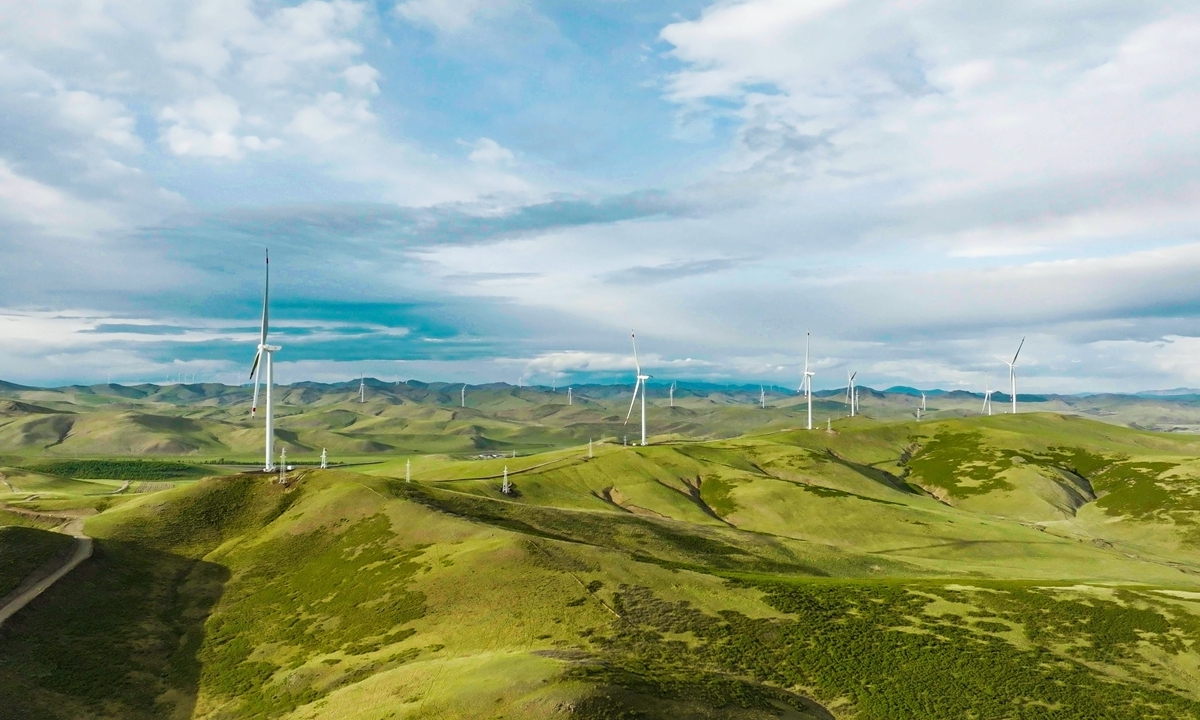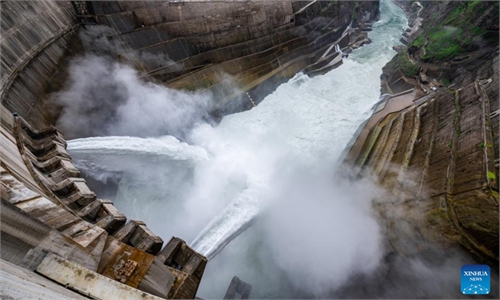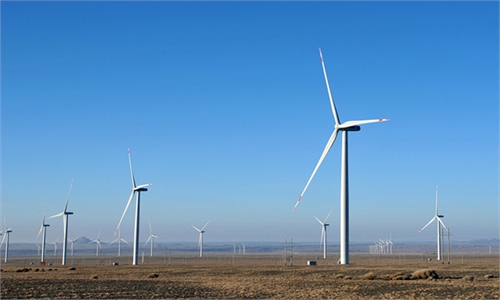
The Hinggan League wind farm phase I project, which is China's first singular onshore wind farm with a power generating capacity of over 1 million kilowatts, comes online on Wednesday in North China's Inner Mongolia Autonomous Region. Utilizing renewable power from the wind farm is equal to saving 920,000 tons of standard coal each year, according to Chinese energy firm CGN. Photo: Courtesy of CGN
China's energy independence capacity remained above 80 percent, a record high, as the country beefs up energy security while making steady progress on its energy transformation toward clean energy in striving to achieve carbon emissions reduction goals, Chinese officials said on Wednesday.
At a press briefing in Beijing, Zhang Jianhua, head of China's National Energy Administration (NEA), said that the country's installed power capacity per capita has risen from 1 kilowatt (kW) in 2014 to 1.7 kW at present, driven by effective policies.
Per capita electricity consumption, another reflection of the rising capacity of power supply, increased from 4,000 kilowatt-hours (kWh) in 2014 to nearly 6,000 kWh, surpassing the UK and Italy, and close to Germany and France, Zhang said.
Zhang noted that the level of safe operation of electric power in China leads the world, with no large-scale power outages. China's energy development will continue to promote a green and low-carbon transformation, on the premise of ensuring energy security, he said.
While global shortages of natural gas, oil, electricity and other energy sources have caused unprecedented challenges to power supplies and the continuous fluctuation of energy prices at high levels, China's energy production and supply have been able to maintain a relatively stable and positive trend as the government has churned out policies to ensure a stable energy supply chain.
He Yang, director of the Electric Power Department of the NEA, said at Wednesday's press conference that several decisive measures have been taken, including signing a responsibility letter for coal supply with various coal-producing provinces and regions, as well as making a pledge that the coal supply guarantee policy originally adopted for last winter and this spring will be extended until March 2023, in a bid to fully unleash advanced production capacity.
At the same time, the government has also strengthened the supervision of the performance of medium- and long-term thermal coal contracts to ensure the normal supply of coal for power generation, He noted.
Driven by policy support and other factors, in the first half of the year, China's output of industrial raw coal increased by 11 percent year-on-year, and it has maintained rapid double-digit growth for five consecutive months this year, according to media reports. Crude oil and natural gas production also increased and stabilized.
As the country strives to reach carbon reduction targets, clean energy power generation involving sources such as hydropower, wind power and solar power has also witnessed rapid growth.
The NEA said that the installed capacity of renewable energy power generation has exceeded 1.1 billion kW, accounting for 45.8 percent of the total installed capacity, an increase of about 14 percentage points over 2014.
Moreover, for many consecutive years, China's installed capacity of wind power, photovoltaic, hydropower and biomass power generation have ranked first in the world, according to media reports.
Zhang said that under the "dual carbon" goal, it is necessary to develop non-fossil energy sources and promote the construction of a new type of power system, which includes coordinating the complementary and optimal combination of non-fossil energy, especially new energy and fossil energy.



